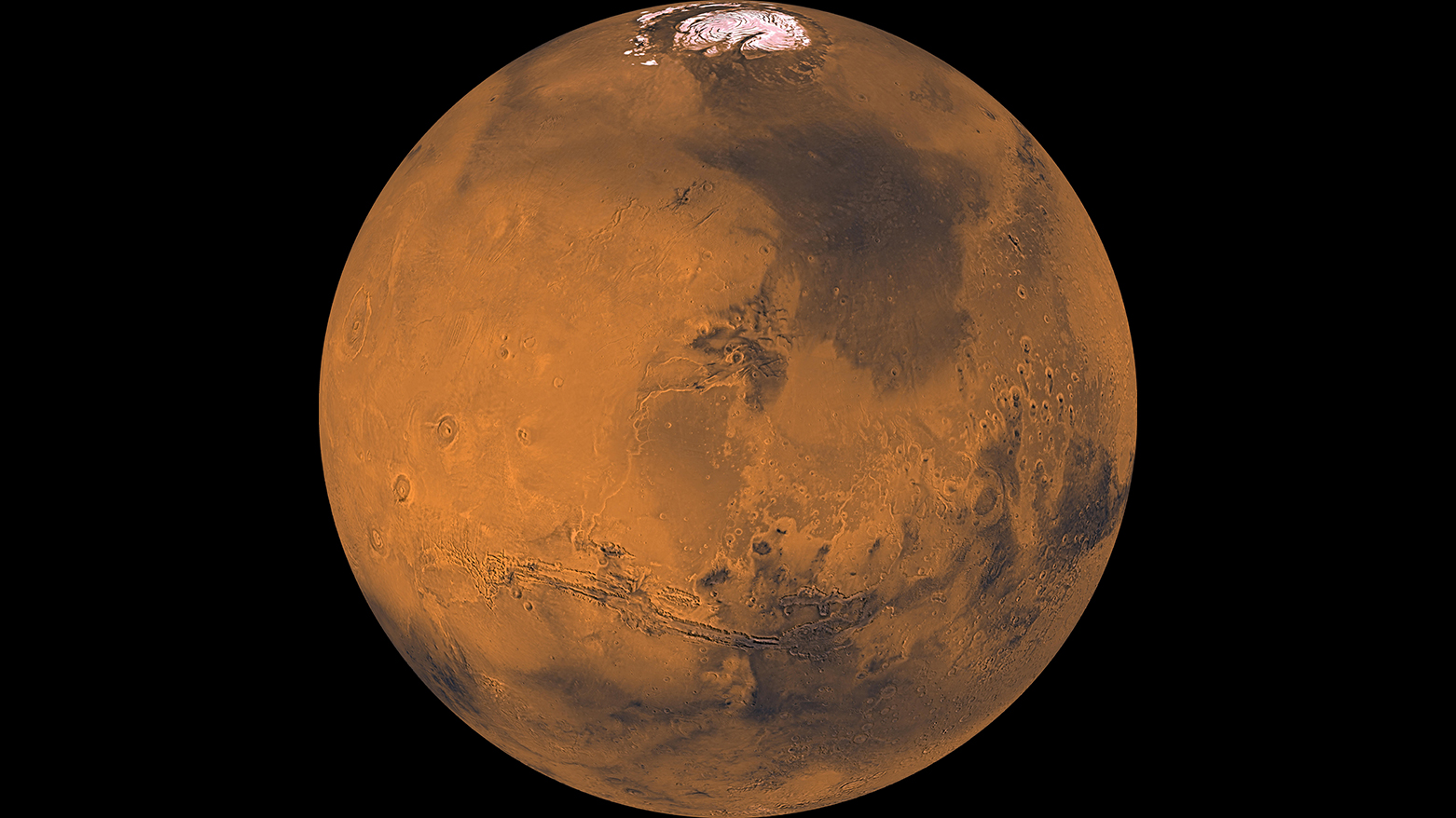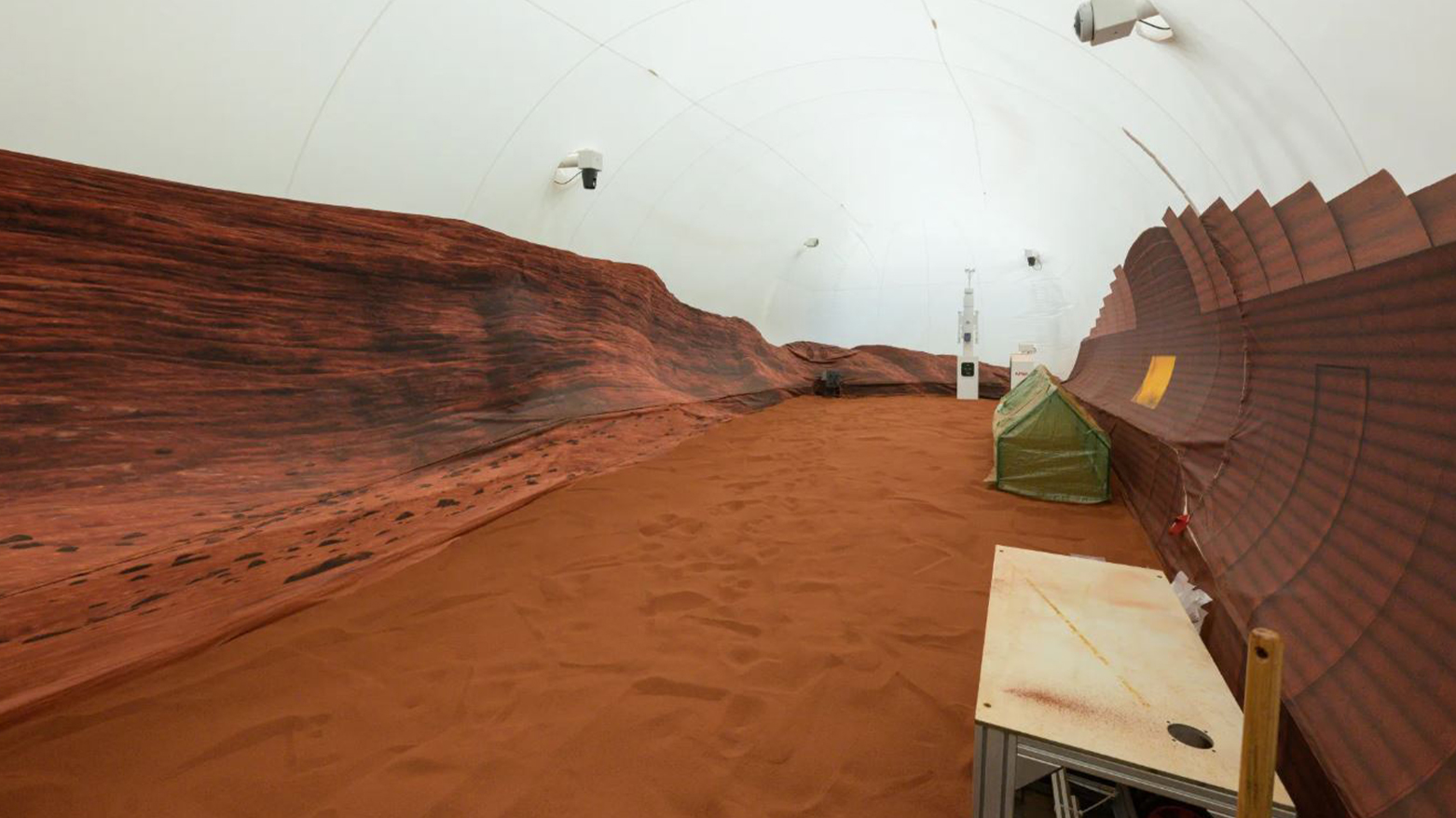Inside ‘Mars Dune Alpha’: NASA Crew Begins 378-Day Mission to Simulate Life on Red Planet
NASA has selected four volunteers for a year-long Mars mission simulation inside a 3D-printed habitat in Houston. The mission, starting Oct. 19, will study the effects of long-duration spaceflight to help plan for future human exploration of the Red Planet.

ERBIL (Kurdistan24) – In a critical step toward preparing humanity for its next giant leap, NASA has announced the selection of four research volunteers who will embark on a year-long, ground-based simulation of a Mars mission, living and working as astronauts inside a specialized habitat at the agency's Johnson Space Center in Houston. The mission, the second of its kind, is designed to gather crucial data on human health and performance to inform and de-risk future crewed expeditions to the Moon, Mars, and beyond, pushing the boundaries of human endurance in a controlled, Earth-based environment.
The four-person primary crew, composed of Ross Elder, Ellen Ellis, Matthew Montgomery, and James Spicer, is scheduled to enter the 1,700-square-foot Mars Dune Alpha habitat on Sunday, October 19, to commence their 378-day mission.
For over a year, they will be isolated from the outside world, living under the same challenging conditions that astronauts will one day face on the Martian surface. Their simulated journey is set to conclude on October 31, 2026. Two additional individuals, Emily Phillips and Laura Marie, have been selected to serve as the mission’s alternate crew members.
Simulating the Red Planet on Earth
This ambitious endeavor is part of a series of Earth-based missions known as CHAPEA (Crew Health and Performance Exploration Analog). The primary goal of the CHAPEA program is to rigorously evaluate human health and performance factors in an environment that meticulously replicates the anticipated rigors of a Mars mission. The crew will be subjected to a host of realistic stressors inside the 3D-printed habitat, including severe resource limitations, unexpected equipment failures, and significant communication delays with the outside world, mimicking the vast distances of interplanetary travel.

The simulation will also impose the psychological challenges of long-term isolation and confinement while demanding the crew perform high-tempo simulated extravehicular activities, or "Mars walks," in a sandbox environment designed to replicate the Martian landscape. According to NASA, these carefully orchestrated scenarios are essential for the agency to make informed decisions about the trade-offs between risks and potential interventions for long-duration deep space exploration missions.
"As NASA gears up for crewed Artemis missions, CHAPEA and other ground analogs are helping to determine which capabilities could best support future crews in overcoming the human health and performance challenges of living and operating beyond Earth’s resources – all before we send humans to Mars," explained Sara Whiting, a project scientist with NASA’s Human Research Program at the Johnson Space Center.
The crew's daily life will be a blend of scientific research and operational tasks. Their duties will include conducting simulated Mars walks, tending to a vegetable garden to test sustainable food production, managing robotic operations, and more. The mission also serves as a testbed for innovative technologies specifically engineered for deep space exploration, such as a new potable water dispenser and advanced diagnostic medical equipment.
"The simulation will allow us to collect cognitive and physical performance data to give us more insight into the potential impacts of the resource restrictions and long-duration missions to Mars on crew health and performance," said Grace Douglas, the CHAPEA principal investigator. "Ultimately, this information will help NASA make informed decisions to design and plan for a successful human mission to Mars."
This mission is the second one-year Mars surface simulation conducted under the CHAPEA program, which is facilitated by NASA’s Human Research Program. The program is dedicated to developing methods and technologies to ensure safe and productive human space travel. The first CHAPEA mission successfully concluded on July 6, 2024, providing a wealth of foundational data.
Meet the Crew
The four primary crew members selected for this demanding mission bring a diverse and highly accomplished set of skills and experiences to the simulated Martian environment.
Ross Elder, serving as the mission Commander, is a major and experimental test pilot in the United States Air Force from Williamstown, West Virginia. He has over 1,800 flying hours in more than 35 military aircraft, including 200 combat hours. His expertise in flight testing focuses on cutting-edge areas like crewed-uncrewed teaming and artificial intelligence. He holds degrees in astronautical and mechanical engineering.
Ellen Ellis, the mission's Medical Officer, is a colonel and acquisitions officer in the United States Space Force from North Kingstown, Rhode Island. Currently a senior materiel leader in the National Reconnaissance Office, she has a deep background in Intercontinental Ballistic Missile operations and GPS satellite engineering. She holds a bachelor's degree in aerospace engineering and four master’s degrees, including in systems engineering and emergency and disaster management.
Matthew Montgomery, from Los Angeles, will be the Science Officer. He is a hardware engineering design consultant specializing in helping technology startups commercialize and scale their products in fields such as robotics and controlled environment agriculture. He earned both a bachelor's and a master's degree in electrical engineering and is also a co-owner of a film production company.
James Spicer will serve as the Flight Engineer. He is a technical director in the aerospace and defense industry with extensive experience in building satellite communications networks for both radio and optical systems, as well as space data relay networks for human spaceflight. He holds bachelor's and master's degrees in aeronautics and astronautics from Stanford University and is also a licensed commercial pilot.
The two alternate crew members, Emily Phillips, a U.S. Marine Corps F/A-18C Hornet pilot, and Laura Marie, a commercial airline pilot specializing in flight safety, stand ready to step in if needed, ensuring the mission's continuity and success.
